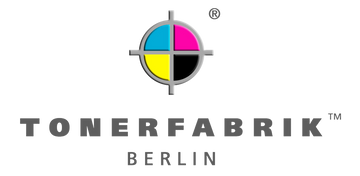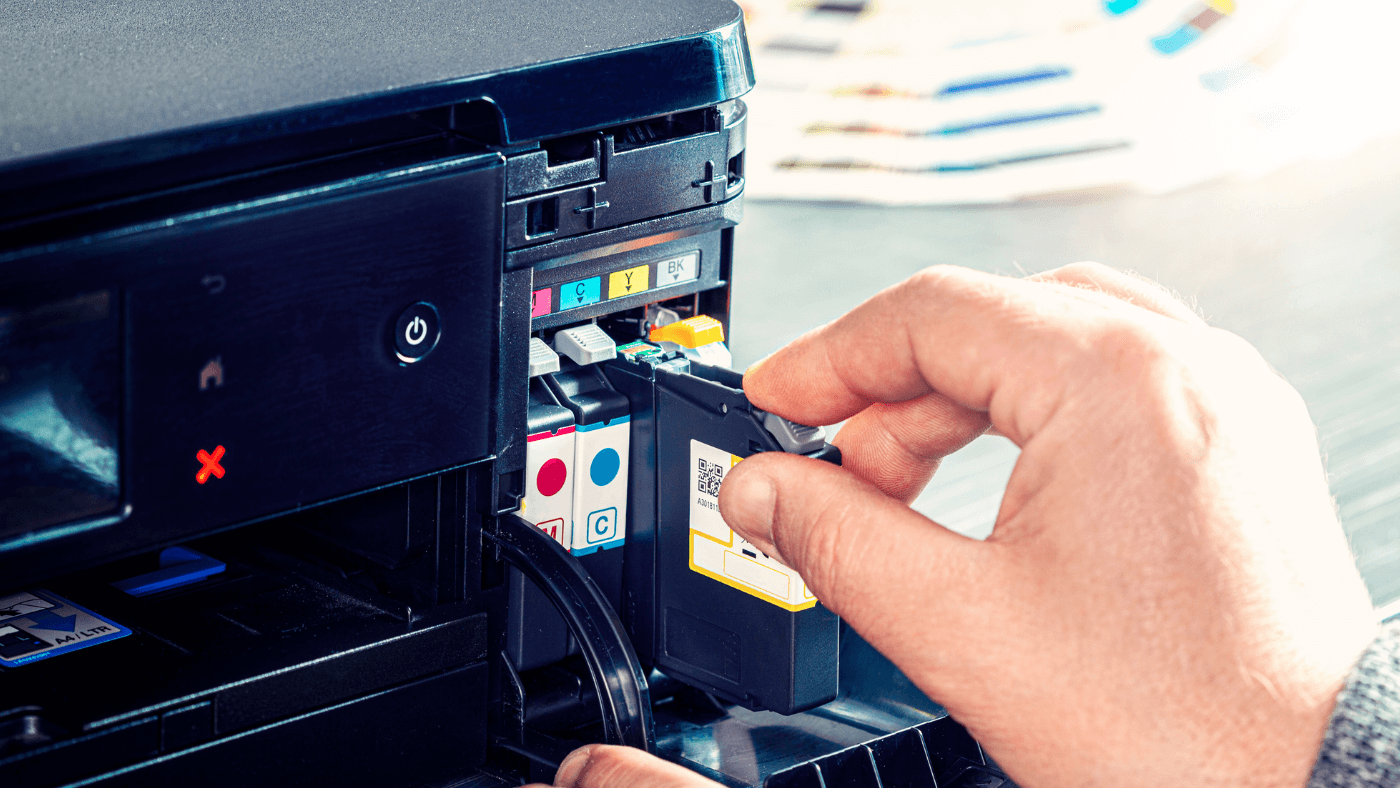Immediate measures for fresh stains
When handling printer ink, it's easy to make a mistake - one moment of carelessness and the ink will spread across documents, your desk or your clothing. But don't panic: with the right immediate measures, the damage can often be minimized and sometimes even completely prevented from leaving permanent stains. The key to success is reacting quickly: the sooner you act, the better your chances of completely removing the ink.
Start by soaking up any excess ink as quickly as possible. A clean, dry cloth or paper towel can work wonders here. It is important to gently dab the stain rather than rubbing it to avoid spreading the ink further. For larger spills, using absorbent material such as cat litter or cornstarch can be helpful as these will effectively absorb the liquid before it can penetrate deeper into the material.
Once most of the ink has been removed, the next step depends on the material involved. On waterproof surfaces, cleaning with a rag soaked in a mild soap solution or isopropyl alcohol can be effective. For clothing, it is recommended to rinse the stain under cold water and then treat with a stain remover or a mixture of water and mild soap before washing the garment according to the care instructions. For ink stains on skin, a thorough cleaning with soap and water is sufficient in most cases.
It is essential to check the result after the initial treatment and repeat the treatment if necessary. With clothing in particular, make sure that the stain is completely removed before it is put in the dryer, as heat can permanently fix stains. Preventative measures such as storing ink cartridges safely and carefully refilling printer ink can help avoid future mishaps.
Removing printer ink from clothing
Removing printer ink from clothes may seem like a daunting task at first, especially when faced with dried-in stains . However, with a systematic approach and the right techniques, you can often return your garments to their original state. Whether it's a mishap with your printer's ink or a stain that's been drying for some time, this step-by-step guide will help you remove both fresh and stubborn ink stains from your clothes. Additionally, we offer special tips for hard-to-clean fabrics like jeans and trousers .
First steps for fresh ink stains
Dealing with dried ink stains
Dried ink stains require a little more intensive treatment. Soak the garment in a solution of warm water and a stain remover . After soaking, the stain can be gently worked with a soft brush. Wash the garment after treatment, ideally with an additional stain remover in the wash cycle. It is advisable to air dry the garment until you are sure that the stain has been completely removed.
Special notes for jeans and trousers
Jeans and trousers can be particularly challenging as these fabrics are often thicker and absorb ink more. For these garments, it may be helpful to extend the soaking time and use a stronger solution of detergent and alcohol to pre-treat the stain. However, always test the colourfastness on an inconspicuous area before using any aggressive cleaning products.
Removing printer ink from clothing often requires patience and perseverance, especially with dried stains. But with the right methods and a little care, you can achieve good results and save your clothes. It is important to proceed carefully at each step and follow the care instructions of the clothing to minimize the risk of damage.
Remove printer ink from skin and hands
Removing printer ink from the skin, and especially from the hands and fingers, is a common problem for anyone who regularly works with printers and ink cartridges. Fortunately, there are several effective and safe methods to remove ink stains without damaging the skin. Here is a summary of proven techniques:
Use mild cleaning agents
Start with the simplest and most skin-friendly method: wash the affected areas with a mild soapy water. Hand soap that is suitable for sensitive skin can be effective at loosening ink, especially if the stains are still fresh.
Alcohol-based solutions
If soap and water aren't enough, you can use alcohol-based solutions. Gently rub the stain with a cotton ball or cloth soaked in isopropyl alcohol (rubbing alcohol). Alcohol acts as a solvent and can help break down and remove the ink. It's important to follow up with a moisturizer, as alcohol can dry out the skin.
Special hand cleaners
For stubborn stains, there are special hand cleaners available in garages or paint supply stores. These products are specially designed to dissolve difficult-to-remove substances such as oil, paint and ink without damaging the skin. Follow the instructions on the packaging and test the product on a small area of skin if necessary.
Natural oils
Natural oils such as olive oil or coconut oil can also help to loosen ink stains. Massage the oil into the affected areas for a few minutes and then wash it off with soap and water. The oily substances will help to loosen the ink and nourish the skin.
Make-up remover
Another helpful tip is to use makeup removers, especially oil-based ones. These products are designed to remove even waterproof makeup and can therefore be effective in removing ink stains from the skin.
Lemon juice and salt
For a natural cleaning method, you can make a paste of lemon juice and salt. Apply the mixture to the ink stain and leave it for a few minutes. Then rinse the skin with warm water. Lemon juice acts as a natural bleach due to its acidity, while salt acts as a gentle exfoliator.
Important: Don’t forget skin care
Whichever method you choose, it is important to use a good moisturizer afterward. The cleansing processes can be stressful and dry on the skin. A nourishing cream will help to regenerate the skin and restore moisture.
Removing printer ink from your skin and hands sometimes requires a little patience and experimentation to find out which method works best for you. In most cases, however, the ink can be removed without leaving permanent stains or skin damage.
Remove stubborn printer ink
Remove stubborn printer ink from hard surfaces
Plastic, wood, tiles, laminate, furniture and stone:
-
Isopropyl alcohol: Start with isopropyl alcohol to dissolve the ink. Soak a cloth in it and gently blot the stain. Repeat if necessary.
-
Nail polish remover (acetone): For particularly stubborn stains, nail polish remover with acetone can be an effective alternative. However, test the product on an inconspicuous area first to avoid damaging the material.
-
Special cleaners: Certain surfaces such as stone or certain types of wood may require special cleaners that are tailored to the material's compatibility.
-
Baking soda paste: A paste made from baking soda and water can help absorb ink on some surfaces. Apply, let sit, then wipe off.
Remove printer ink stains from carpet and fabric
Carpets and general fabrics:
-
Alcohol: Blot the stain with a cloth soaked in isopropyl alcohol. Do not rub, as this may spread the stain.
-
Dishwashing liquid and water: A mixture of dishwashing liquid and warm water can help dissolve the ink. Apply with a sponge, allow to soak, then gently dab.
-
Ammonia solution: A weak solution of water and ammonia can be effective, especially for difficult-to-remove stains. Follow with a thorough rinse with water.
-
Carpet cleaners: Special carpet cleaners may be needed for deep-seated stains. Follow the directions on the product for best results.
Black printer ink:
Black printer ink is often particularly stubborn. Start with alcohol or a special ink stain remover. It may be necessary to repeat the cleaning process several times. For delicate fabrics, you should
Preventive measures and careful handling of printer ink can significantly minimize the risk of ink stains. Here are some tried and tested tips and strategies on how to prevent future ink stains and the best tools and methods for removing printer ink stains. You will also receive specific advice for cleaning difficult surfaces.
Preventive measures against printer ink stains
- Handling with caution: Be especially careful when changing or refilling printer cartridges. Use a mat to catch any drips.
- Wear protective clothing: Gloves and, if necessary, an apron can prevent ink from getting on your skin or clothing.
- Printer Maintenance: Regular cleaning and maintenance of your printer can prevent leaks and extend the life of the device.
How to remove printer ink: the best tools and practices
- Isopropyl alcohol: Ideal for most hard surfaces and for removing ink from skin.
- Dishwashing detergent: A mixture of dishwashing detergent and warm water is effective on fabrics and soft surfaces.
- Special cleaners: For stubborn or dried stains, special ink stain removers may be required. Test these on an inconspicuous area first.
Removing printer ink from special surfaces
Parquet and floor:
- Protect parquet and floor coverings by immediately wiping up spilled ink with an absorbent cloth.
- A mixture of water and white vinegar can help gently remove remaining stains without damaging the wood.
Removing printer ink from laundry:
- Treat ink stains on clothing as soon as possible with a stain pre-treatment product.
- Cold water and a stain remover are usually effective before putting the garment in the washing machine.
Special cases:
- Laminate: Use an alcohol-based cleaner to gently wipe away ink without damaging the surface.
- Furniture: For upholstered furniture, a foam upholstery cleaner or a gentle soap solution can remove stains without damaging the fabric.
By following these practices and being equipped with the right cleaning supplies, you can reduce the risk of ink stains and respond effectively to mishaps. Most importantly, it's important to always be mindful when working with ink and take preventative measures to avoid stains in the first place.
Conclusion
Properly removing printer ink - whether from clothing, skin, hard surfaces or fabrics - requires patience, the right cleaning products and a strategic approach. By applying the methods and techniques presented, you can successfully tackle most ink stains. The key aspects include responding quickly to fresh stains, choosing appropriate cleaning products based on the stain type and material, and performing a careful follow-up treatment to completely remove the ink.
Preventive measures play a crucial role in minimizing the risk of ink stains. These include careful handling when refilling printer cartridges, regular printer maintenance and the use of protective clothing. In addition, it is important to familiarize yourself with the best tools and practices for removing ink stains in order to act effectively when necessary.
Removing printer ink from special surfaces such as parquet, laminate or upholstered furniture requires special attention and often the use of specific cleaning solutions to avoid damage. However, by following the tips and advice provided, you can overcome even these challenges.
In summary, knowing the right removal and prevention strategies can help you handle printer ink safely and cleanly, so you'll be well prepared should an accident happen and ensure your items and clothing are back to their best condition as quickly as possible.



